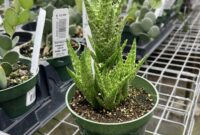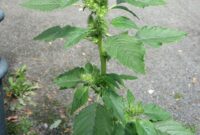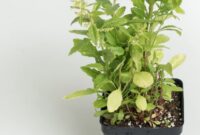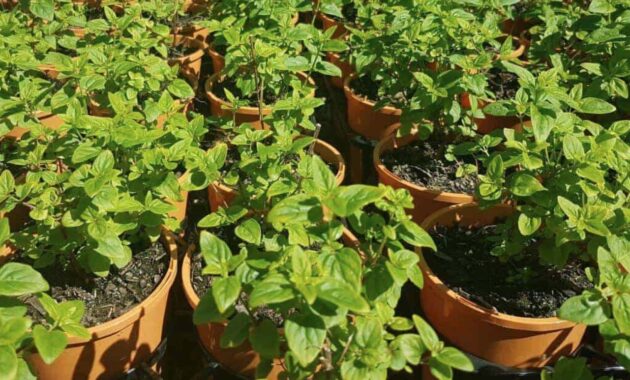
What is Mentha australis?
Mentha australis, often referred to as Australian Mint, is a perennial herb native to Australia. It’s a member of the mint family, known for its refreshing aroma and diverse uses. This versatile plant has captured the attention of gardeners, herbalists, and culinary enthusiasts alike.
Mentha australis Uses
- Culinary Delights: Mentha australis leaves can be used to add a unique flavor to a variety of dishes. Its refreshing mintiness can elevate the taste of salads, desserts, and beverages. It’s particularly popular in Australian cuisine, where it’s used to flavor traditional dishes like lamb and fish.
- Herbal Medicine: This herb has been used in traditional medicine for centuries. It is believed to have various medicinal properties, including anti-inflammatory, antimicrobial, and analgesic effects.
- Aromatic Oils: Mentha australis essential oil is extracted from the plant’s leaves and stems. It is prized for its refreshing scent and is used in aromatherapy, perfumes, and cosmetics.
Mentha australis Benefits
- Digestive Health: Mentha australis can help soothe digestive issues like bloating, indigestion, and irritable bowel syndrome.
- Respiratory Relief: The herb’s anti-inflammatory properties can help alleviate respiratory problems such as congestion and cough.
- Pain Relief: It can be used topically to relieve pain associated with muscle aches and arthritis.
- Mental Clarity: The invigorating aroma of Mentha australis can help improve focus and concentration.
How to Grow Mentha australis
Growing Mentha australis is relatively easy, even for beginners. Here’s a step-by-step guide:
- Choose the Right Location: Select a sunny spot in your garden with well-draining soil.
- Prepare the Soil: Ensure the soil is rich in organic matter. You can add compost or well-rotted manure to improve its fertility.
- Planting: Plant the Mentha australis seedlings or cuttings in the prepared soil, spacing them about 12 inches apart.
- Watering: Water the plants regularly, especially during dry periods. However, avoid overwatering as it can lead to root rot.
- Maintenance: Regularly remove weeds and dead leaves to keep the plants healthy.
- Harvesting: Harvest the leaves when they are fully grown and aromatic. You can harvest them throughout the growing season.
Mentha australis Cultivation
Mentha australis is a vigorous grower and can quickly spread if not controlled. It’s essential to plant it in a container or raised bed to prevent it from becoming invasive. You can also use ground covers or barriers to limit its spread.
Mentha australis Characteristics
- Appearance: Mentha australis is a perennial herb with upright stems and aromatic, toothed leaves.
- Flowers: It produces small, purple or white flowers in summer.
- Aroma: The plant has a strong, refreshing mint scent.
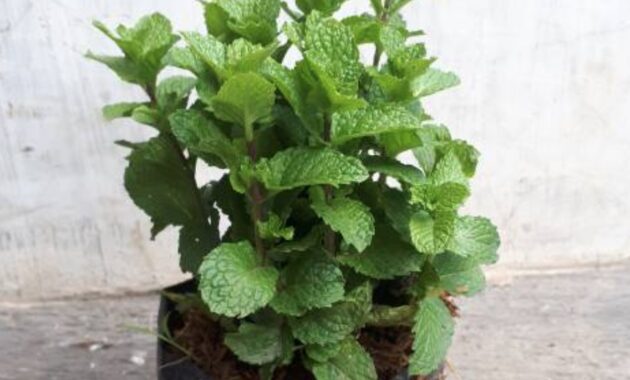
Mentha australis Medicinal Properties
As mentioned earlier, Mentha australis has various medicinal properties. It is often used to treat a range of ailments, including:
- Digestive disorders
- Respiratory problems
- Headaches
- Muscle aches
Mentha australis Essential Oils
Mentha australis essential oil is extracted from the plant’s leaves and stems through steam distillation. It is a versatile oil with numerous applications, including:
- Aromatherapy
- Perfumery
- Cosmetics
- Cleaning products
Mentha australis Growing Conditions
Mentha australis thrives in warm, sunny conditions. It prefers well-draining soil that is rich in organic matter. It can tolerate a wide range of soil types, but it prefers slightly acidic soil.
Is Mentha australis Invasive?
While Mentha australis is not as invasive as some other mint species, it can still spread rapidly under ideal conditions. It’s important to monitor its growth and take steps to control its spread if necessary.
Mentha australis Propagation
Mentha australis can be propagated through various methods, including:
- Seed propagation: This method is less common as it can be time-consuming and less reliable.
- Stem cuttings: This is the most common method of propagation. Simply cut a stem with a few leaves and root it in water or soil.
- Division: Divide mature plants in spring or fall to create new plants.
Mentha australis for Tea
Mentha australis leaves can be used to make a refreshing and invigorating tea. Simply steep a few fresh or dried leaves in hot water for a few minutes. You can add honey or lemon to taste.
Mentha australis Aroma
The aroma of Mentha australis is strong, refreshing, and reminiscent of traditional peppermint. This invigorating scent makes it a popular choice for aromatherapy and relaxation techniques.
Mentha australis Soil Requirements
Mentha australis prefers well-draining soil that is rich in organic matter. It can tolerate a wide range of soil types, but it prefers slightly acidic soil.
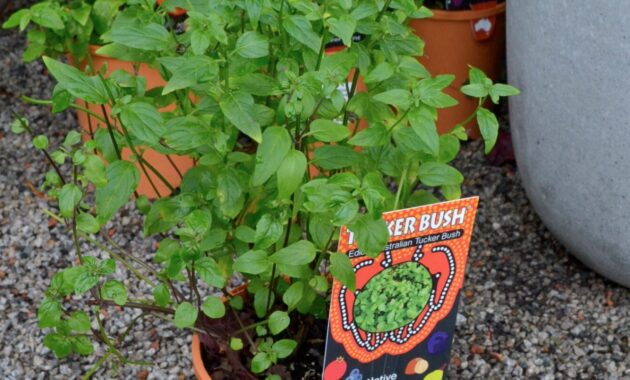
Mentha australis in Garden Design
Mentha australis can be a beautiful addition to your garden. It can be used as a ground cover, border plant, or container plant. Its attractive foliage and fragrant flowers can add a touch of beauty and fragrance to any garden.
Conclusion
Mentha australis is a versatile herb with a wide range of uses. Whether you’re looking to add flavor to your dishes, soothe digestive issues, or simply enjoy its refreshing aroma, this plant has something to offer. With its easy-care nature and numerous benefits, Mentha australis is a valuable addition to any home garden.
FAQs
- Can I grow Mentha australis indoors?
Yes, you can grow Mentha australis indoors in a pot. Place it in a sunny location and water it regularly. - How often should I harvest Mentha australis?
You can harvest Mentha australis leaves throughout the growing season. Harvest them in the morning when the essential oil content is highest. - Can I use Mentha australis essential oil directly on my skin?
It’s best to dilute Mentha australis essential oil with a carrier oil before applying it to your skin. This can help prevent skin irritation. - Can I freeze Mentha australis leaves?
Yes, you can freeze Mentha australis leaves to preserve their flavor and aroma. Wash the leaves, dry them thoroughly, and store them in an airtight container in the freezer. - What pests and diseases affect Mentha australis?
Mentha australis is generally resistant to pests and diseases. However, it can be affected by aphids, whiteflies, and powdery mildew.

